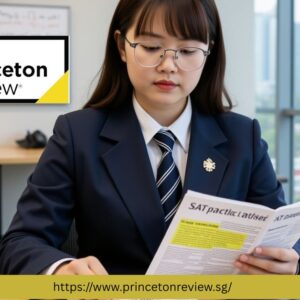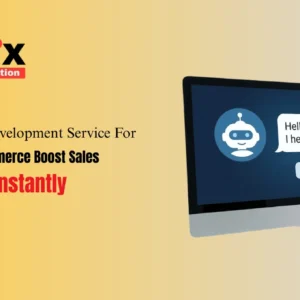In today’s fast-evolving workplace, Atana is making waves with its new solution Organizational Insights designed to give HR and L&D leaders a clearer view of internal learning gaps and the associated business-risk exposures.
This new release underscores Atana’s growing role as a leader in AI-powered learning intelligence, helping HR and L&D teams turn learning data into actionable business decisions. By transforming how organizations understand their skill ecosystems, Atana’s Organizational Insights bridges the long-standing disconnect between training initiatives and tangible business performance outcomes.
Reimagining Workforce Intelligence for the Modern Enterprise
Modern organizations operate in an era of relentless change—new technologies, evolving compliance standards, global workforce shifts, and continuous digital transformation. Yet, despite record investments in corporate learning and development, many leaders still struggle to answer a critical question: Are our people learning what truly matters for business success?
Atana’s Organizational Insights directly addresses this challenge. It provides HR, Learning & Development (L&D), and business leaders with a data-driven map of how learning activity aligns with strategic business needs and operational risks.
Rather than simply tracking course completions or participation rates, the solution measures learning depth, skill coverage, and potential exposure areas—empowering companies to identify not just who is learning, but what knowledge is missing, where it’s concentrated, and how it affects performance and compliance.
Turning Data into Business Intelligence
At its core, Atana’s new solution harnesses the rich data already generated by its learning platform—such as participation rates, course completions, assessment results, and competency models—and transforms it into intelligent visualizations and predictive insights.
These insights are presented through intuitive dashboards that illustrate where skills are underdeveloped, where critical expertise resides within a limited set of individuals, and how those gaps translate into quantifiable business risks.
For instance, if a manufacturing team shows low completion rates in safety training or if compliance modules lag in a specific region, Organizational Insights instantly highlights these vulnerabilities, allowing HR and compliance teams to intervene before issues escalate into costly disruptions or penalties.
This capability not only drives learning effectiveness but also helps business leaders connect the dots between skills, productivity, and risk management—a key challenge in today’s fast-paced industries.
Key Capabilities and Features of Atana Organizational Insights
Atana’s new Organizational Insights platform introduces several advanced capabilities that elevate how organizations measure, monitor, and manage workforce learning health:
1. Comprehensive Skill Mapping Across the Enterprise
The platform maps learning participation, course completion data, and assessment results across organizational layers, teams, roles, job families, and geographies. This allows HR and L&D leaders to pinpoint where skill deficiencies exist and which employee groups face the greatest exposure.
2. Business-Risk Visualization
One of the platform’s most powerful differentiators is its ability to correlate learning gaps with business-risk vectors. For example:
-
If compliance training completion drops in a regulated department, the dashboard flags potential audit exposure.
-
If only a few individuals hold critical product knowledge, the system quantifies the operational risk of their potential attrition.
This alignment enables HR and business units to prioritize learning interventions where they have the greatest impact on reducing organizational risk.
3. Predictive Scenario Modeling
Beyond static dashboards, Atana introduces a forecasting engine that simulates scenarios such as:
-
The attrition of key technical experts
-
New regulatory changes
-
Expansion into emerging markets
-
Shifts in workforce composition
By modeling these “what-if” scenarios, organizations can anticipate risks and invest proactively in training, reskilling, or succession planning before capability gaps translate into lost productivity or compliance failures.
4. Seamless Integration with Atana’s Learning Ecosystem
Because the solution is natively built within the Atana learning ecosystem, no additional integration or complex implementation is required. Data flows automatically from learning records, skill assessments, and user analytics into the Insights dashboards—ensuring that organizations can start generating value almost immediately.
5. Continuous Updates and Real-Time Dashboards
Unlike static reports, Organizational Insights provides real-time data visualization and automatic updates. As employees complete training or as new learning programs are rolled out, the dashboards reflect live changes—empowering decision-makers with the most current picture of organizational learning health.
Why Organizational Insights Matters for HR and L&D Leaders
For many organizations, linking learning outcomes to business impact has long been a missing piece of the HR strategy puzzle. Traditional learning management systems often track activity—but not outcomes. Atana’s Organizational Insights changes that paradigm.
By connecting learning engagement with performance and risk metrics, the platform provides executives with clear, data-backed answers to critical questions:
-
Which teams or regions are at greatest operational risk due to learning gaps?
-
Are compliance and safety requirements adequately covered across the workforce?
-
Where should training budgets be focused for maximum strategic return?
-
How can we ensure continuity of expertise if key employees depart?
In essence, the platform transforms L&D from a support function into a strategic enabler—one that drives measurable business value through data-led workforce intelligence.
Driving Proactive Learning and Risk Mitigation
A common scenario in many organizations is reactive training—where learning initiatives are deployed after issues arise. Atana’s platform helps reverse this dynamic.
Through predictive analytics and skill-gap visualization, HR leaders can shift toward proactive mitigation, addressing vulnerabilities before they lead to costly problems.
For example:
-
If data reveals that a small subset of employees holds mission-critical technical expertise, HR can prioritize knowledge transfer programs or cross-training to reduce dependency risk.
-
If compliance coverage drops in a specific business unit, interventions can be launched before audit deadlines.
-
If leadership gaps emerge in growth markets, succession planning and targeted development can begin early.
This predictive capability ensures that learning investments are both strategic and measurable, aligning with organizational risk management and business continuity goals.
Real-World Use Cases Across Industries
Atana’s Organizational Insights is relevant across a broad spectrum of industries—from life sciences and healthcare to finance, manufacturing, and technology.
-
In regulated sectors, such as banking or pharmaceuticals, the platform ensures that mandatory training and competency standards are met and auditable.
-
In technology and engineering, it helps identify where skill obsolescence or concentrated knowledge could endanger innovation continuity.
-
In manufacturing or energy, it highlights safety training coverage and helps predict where non-compliance might lead to operational hazards or regulatory penalties.
The result is a unified approach where learning and risk management converge, empowering organizations to not only build capability but also safeguard performance and compliance.
Implementation Considerations for Organizations
While Atana’s solution delivers transformative potential, successful implementation requires thoughtful planning. Organizations should consider the following best practices:
1. Ensure Data Completeness
For accurate insights, all relevant learning data must be captured—across departments, roles, geographies, and training types. Integrating diverse learning records into a unified system ensures the risk models reflect the full workforce reality.
2. Embed Insights into Decision-Making
The true power of Organizational Insights lies in its use. HR and L&D leaders must integrate the dashboard outputs into governance forums, such as talent reviews, compliance steering committees, and workforce planning sessions, ensuring insights drive real business decisions.
3. Maintain a Dynamic Skill Taxonomy
To model risk effectively, companies should maintain a current and business-aligned skill taxonomy, mapping training modules to critical capabilities. As roles evolve—particularly in digital and AI-related fields—taxonomy updates are essential.
4. Measure Outcomes Beyond Compliance
Organizations should go beyond identifying learning gaps. They must track the tangible outcomes of interventions—such as reduced error rates, improved onboarding speed, higher retention of skilled talent, and measurable reductions in business risk.
5. Plan for Scalability
As companies evolve, their data ecosystems and learning programs expand. Atana’s platform is designed to scale, but continuous optimization ensures that insights remain relevant as new technologies, job roles, and market demands emerge.
The Strategic Impact: From Learning to Organizational Intelligence
Atana’s Organizational Insights isn’t just another analytics tool—it represents a new category of workforce intelligence. By bridging the gap between L&D data and strategic decision-making, it empowers organizations to move from compliance-focused learning to capability-driven performance management.
This transition has profound implications:
-
HR leaders can quantify the ROI of learning initiatives.
-
Executives gain transparency into workforce readiness.
-
Organizations develop resilience by reducing dependency on a few experts.
-
Learning becomes a measurable contributor to innovation, safety, and profitability.
In short, Atana helps businesses evolve from reactive learning to strategic knowledge stewardship, ensuring they are equipped to adapt, perform, and thrive amid continuous change.
Conclusion: Empowering the Next Generation of Data-Led Learning Organizations
The launch of Atana Organizational Insights marks a defining moment in the evolution of enterprise learning and development. By uniting skill intelligence, risk modeling, and predictive analytics in one platform, Atana is transforming how organizations understand and manage their workforce capabilities.
For HR and L&D leaders, this solution delivers what the market has long demanded—a clear, quantifiable link between learning and business impact. It equips organizations to identify vulnerabilities, prioritize development investments, and future-proof their talent strategies.
As industries continue to face disruption, companies that leverage data-driven insights to close learning gaps and reduce risk will hold a decisive advantage. With Organizational Insights, Atana empowers businesses to lead confidently in a future defined by both human potential and intelligent technology.
Stay updated with HR Tech News for the latest innovations in Human Resources technology and expert insights from industry leaders!
Read related news – https://hrtech-news.com/recruit-crm-shares-50-plus-ai-prompts-for-modern-recruitment/



